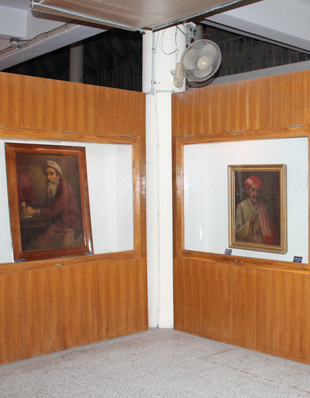
Introduction
Raja Ravi Varma was the Pioneer of Modern Indian Art in 19th century. He was born in 1848 in Killimanoor Village, twenty four miles from the town of Kottayam in Travancore State. In 1866, he married the youngest sister of Maharaja of Travancore. Ravi Varma on his twentieth year he had the chance to observe the working technique of Theodore Jensen, a Danish born British artist, who visited Travancore in 1869. Ravi Varma copied the western technique in his work, but he chose for his subject themes from Hindu mythology. He won Governor's Gold medal for his Nair Lady at Toilet, in 1873.
Raja Ravi Varma painted scenes form Hindu mythology and popularised it. He introduced large bright areas of colour in his portrait and landscape. Ravi Varma's younger brother C. Raja Ravi Varma joined with him as companion and collaborator during their art career.
Ravi Varma's work was acclaimed at the Pune exhibition in 1880 and art exhibition held in Vienna and Chicago in 1892. The rulers of Mysore and Travancore appreciated his numerous paintings of Hindu mythology. Ravi Varma's finest paintings of "Sakuntala", "The Miser", "Lady with the Mirror", "Yasodha" and "Krishna" are on display in the new gallery lighted with Fibre optic lighting.
Raja Ravi Varma travelled widely throughout India and commissioned painting for Indian rulers. During his last days Ravi Varma could not devote much time to painting, as he became the guardian of the next ruler of Travancore, who was then a minor. He dominated the art scene like a colossus form 1870 till his death in 1906.
The paintings of Raja Ravi Varma, along with its paintings and sculptures of D.P. Roy Chowdhury, have been housed in.
The Raja Ravi Varma paintings, which are considered as National Treasures, have been placed in contemporary Art gallery.


